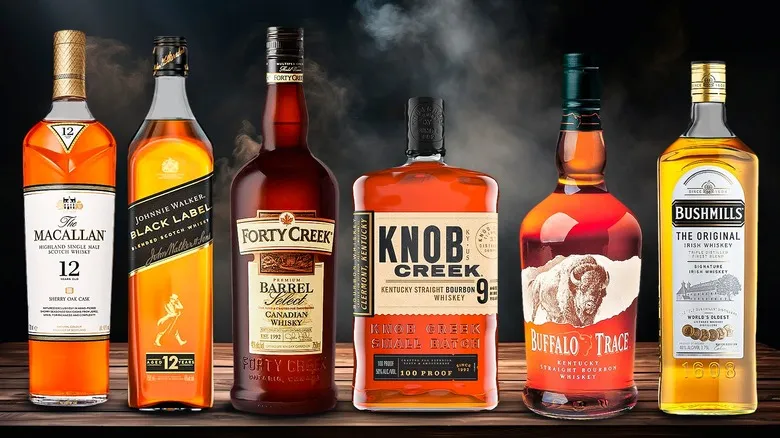Buffalo Trace and Wild Turkey 101 bourbon
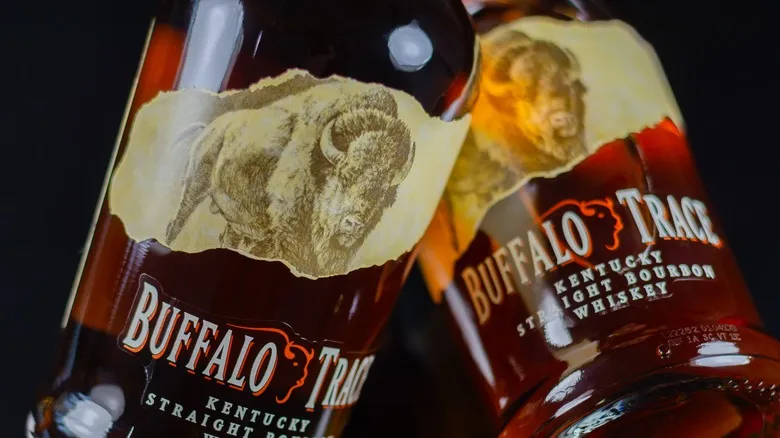
Both Jennie Wilson and Torrance Coombs begin their whiskey journey with bourbon. "I would say we tend to favor bourbons more than any other type of whiskey," Wilson shared, "and our absolute favorite bourbon is undoubtedly Buffalo Trace." Buffalo Trace Kentucky Straight Bourbon has been crafted from corn, rye, and barley malt for over 200 years at what is known as "the world's most decorated distillery." The distillery named its spirit after the majestic animals that migrated along the Kentucky River, right at their site in Franklin County. Wilson mentions that they incorporate Buffalo Trace into whiskey sours, New York sours, brown derbies, and other "classic bourbon cocktails where you want a smooth American bourbon without unexpected flavor profiles." If you enjoy Aperol, give a paper plane a try!
By definition, bourbon is whiskey made from at least 51% corn and aged in charred oak barrels. To qualify as "straight" bourbon, it must be aged for a minimum of two years. This whiskey is a quintessentially American spirit, particularly linked to the state of Kentucky. While most bourbon is produced in Kentucky, it can technically be made anywhere in the United States. Other popular bourbons include Maker's Mark, Bulleit, and Four Roses, all of which are also crafted in Kentucky.
Torrance Coombs believes, "the true value in whiskies lies primarily in American varieties like bourbons and ryes." His preferred budget-friendly bourbon is Wild Turkey 101. "It has a bit of a kick," he notes, "but it's delicious. It's that kind of burn that invigorates your senses in a pleasant way." Wild Turkey 101 is aged for six to eight years in American White Oak barrels that have been charred to an alligator-like texture in Lawrenceburg, Kentucky.
Baker's, Blanton's, and Woodford Reserve premium bourbons

For a more refined bourbon experience, Jennie Wilson recommends choosing either Baker's or Blanton's. If you're looking to enjoy it neat rather than in a cocktail, these are the two "more special" premium bourbons she would consider gifting. Baker's is a single barrel bourbon, meaning it doesn't blend its whiskey, resulting in a "big, bold bourbon" with unique nuances that vary from barrel to barrel. On the other hand, Blanton's asserts that it pioneered the single barrel bourbon concept in 1984 when Master Distiller Elmer T. Lee began bottling "super premium" bourbons in this manner.
Torrance Coombs favors Woodford Reserve, a premium small batch bourbon crafted from 72% corn. The distillery is recognized as a national historic landmark. "It stands well on its own," Coombs notes, "you can enjoy it neat. It has a sweetness that also makes it great for an old fashioned, but ... sipping Woodford is simply delightful, and it’s reasonably priced."
While you can enjoy any spirit neat if you wish, whiskies often lend themselves to being served straight or on the rocks more than other liquors. Ordering one neat can feel sophisticated or even assertive. So, if you find yourself enjoying bourbon, consider exploring these premium selections if they're available.
Lot No. 40, Knob Creek, Bulleit, and Old Forester Rye
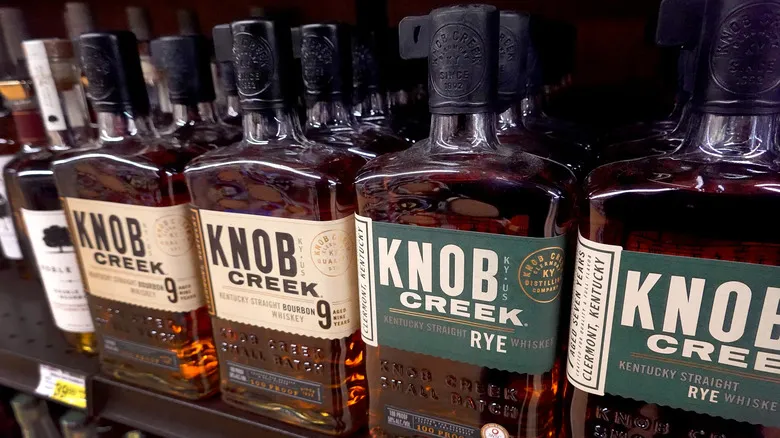
Rye shares several similarities with bourbon. Both spirits are aged in charred new oak barrels and typically only have water added, with many recipes featuring a mash of corn and rye grains. However, while bourbon must consist of at least 51% corn, rye whiskey is primarily made from rye grain. Many distilleries produce both bourbon and rye whiskey, and both are commonly used in classic cocktails. For example, if you're making a Manhattan, rye is often the preferred choice.
Jennie Wilson highlights J.P. Wiser's Lot No. 40, a Canadian whiskey made entirely from rye, as her top pick for the bar at 11th Mile. She appreciates its "nice peppery note" in cocktails. Bartender Meg Messer favors Knob Creek, which produces both bourbons and ryes. Knob Creek is aged for seven years before bottling, and its high corn mashbill makes it an excellent option for bourbon enthusiasts looking to incorporate rye into their collection.
When asked about his favorite rye, Torrance Coombs mentioned Bulleit rye. This American brand, based in Louisville, Kentucky, also produces bourbon. The bourbon features an orange label on its distinctive canteen-shaped bottles, while the rye sports a green label. He recommends choosing the green label, as it works wonderfully in cocktails like an old fashioned, sazerac, or whiskey ginger. "The rye has a bit of spiciness to it... aromatic and somewhat peppery," he explains. He also gave a nod to Old Forester rye.
Jack Daniels Tennessee whiskey
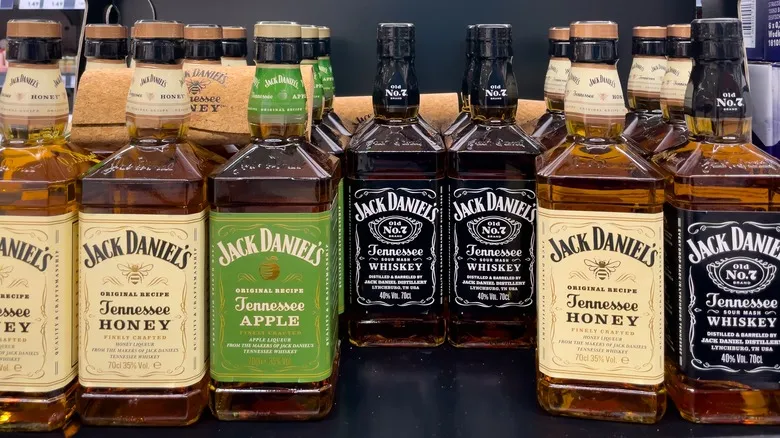
Tennessee whiskey isn't just a well-known country song; it's also a distinct category of whiskey that frequently appears in the U.S. "Essentially, Tennessee whiskey is like bourbon, but produced in Tennessee rather than Kentucky," explains Torrance Coombs. In certain international trade agreements, it is officially classified as a type of bourbon. Coombs adds that it's "equally delicious, and honestly... I believe Jack holds up quite well." He’s referring to Jack Daniels, of course.
Produced in Tennessee since 1866, few alcohol brands are as iconic. In fact, when you search for "Tennessee whiskey," Jack Daniels is typically one of the first results—right after Chris Stapleton's rendition of the song, naturally. It was the first registered distillery in the U.S. Old No. 7 is the original Jack Daniels sour mash Tennessee whiskey, known for being "charcoal mellowed." The brand began expanding its product line in the 1980s, and its flavored whiskies, such as Tennessee Apple, Tennessee Fire, and Tennessee Honey, are now widely available.
The distinctive square bottle with the black label can be found almost everywhere. However, there are also smaller brands to discover along the Tennessee Whiskey Trail. You can obtain a Tennessee Whiskey Trail passport to document your travels. The trail's website can assist you in planning your route, and you might even win a prize if you visit all the participating distilleries. Who's up for a road trip?
Crown Royal, J.P. Wiser, and Forty Creek Canadian whiskey
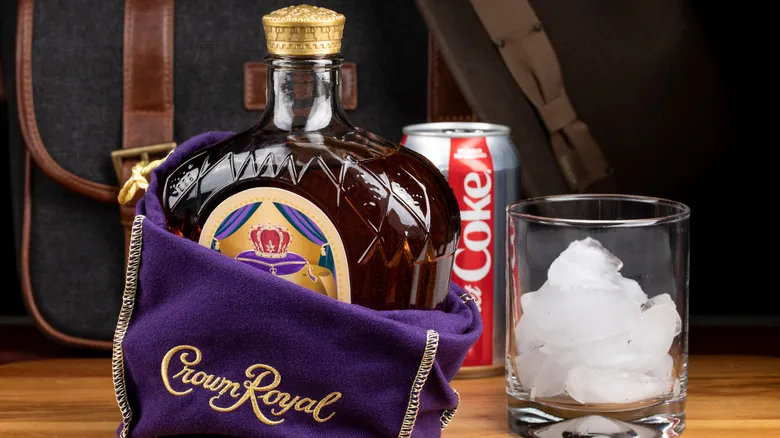
Canadian whiskies are primarily known for being blended, characterized by their light and smooth flavor profile. Some historic Canadian brands have achieved legendary status, and you might remember from your history lessons how Canadian distillers supplied bootlegged whisky to Americans during Prohibition.
J.P. Wiser and Seagram's both originated in Ontario in 1857. The renowned Crown Royal was introduced in 1939 as a gift for the King and Queen of England. This blend consists of over fifty different whiskies and made its way into the U.S. market in the 1960s, becoming one of the best-selling Canadian whiskies. Originally known as Seagram's Crown Royal, it was acquired by the beverage giant Diageo in 2000, yet it continues to be produced in Canada, with about 80% of its grain sourced locally. You’ll often find it packaged in its distinctive purple bag.
Jennie Wilson's personal favorite, Forty Creek, traces its origins back to 1972. The distillery produces a variety of whiskies, but she particularly recommends the Copper Pot (now called Copper Bold) whiskey. Launched in 2007, this spirit was crafted to further the distillery's goal of "pushing the boundaries of Canadian whisky." It is a blend of three different grain whiskies, each aged separately. Acquired by Campari Group in 2014, it remains produced in the Niagara region of Ontario. Wilson notes that it pairs wonderfully with warm cider or "an apple-y style drink." As autumn approaches, it's the perfect time to enjoy Copper Pot and get cozy.
Bushmills and Jameson Irish wiskey
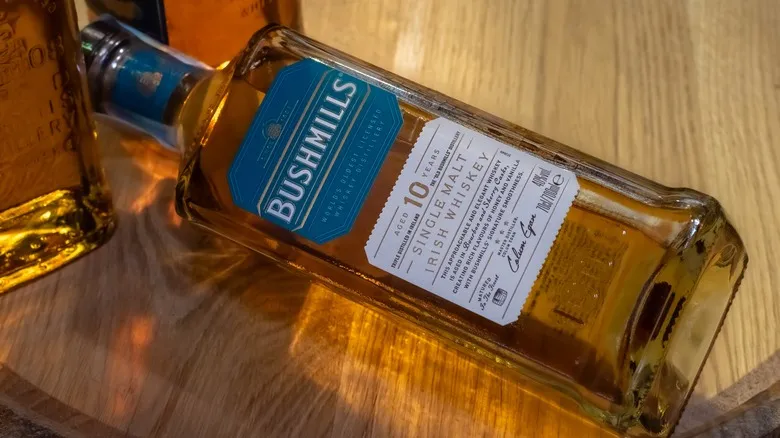
Irish whiskies originate from Ireland, which is no surprise. Similar to Scotch, they primarily consist of malted barley, often blended with other grains such as wheat and corn. In the context of Irish and Scottish whiskies, the term "single malt" denotes whiskies produced from 100% malted barley in pot stills at a single distillery. Grain whiskies incorporate wheat or corn, blended whiskies mix single-malt and grain whiskies, while single pot still whiskey is a distinctive Irish variety made from both malted and unmalted barley. All these whiskies are aged in wooden casks and are typically triple distilled.
"Our favorite Irish whiskey at the bar is Bushmills," shares Jennie Wilson. Established in 1608, Bushmills boasts the title of the oldest licensed whiskey distillery in the world. Named after the Bush River, it has been triple distilling whiskey in copper pot stills for over four centuries. On the other hand, Jameson, recognized by its dark green bottle, is the Irish whiskey known globally. Founded in 1780, Jameson initially produced its whiskey in Dublin before relocating to Cork, where it continues to operate today. Although it’s not available at 11th Mile, Wilson admits, "Personally, I love it." Irish whiskies are the perfect choice for a warm, spirited drink. How about some Irish coffee?
Johnnie Walker and The Famous Grouse blended Scotch
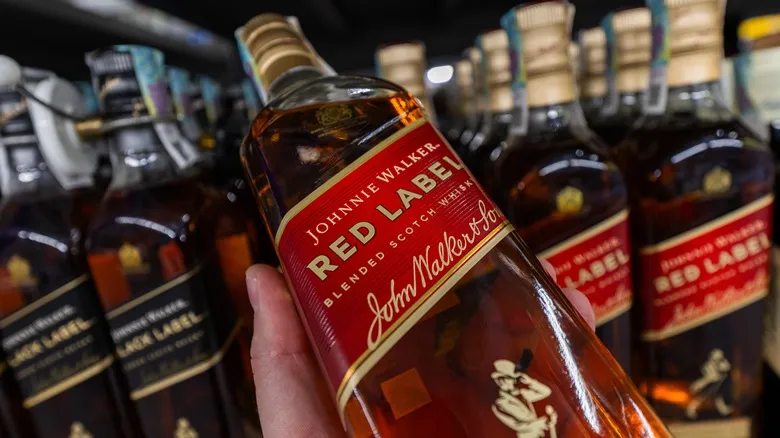
The Famous Grouse blended Scotch is the key ingredient in Jennie Wilson's renowned penicillin cocktails. This whisky has been produced in Perthshire, Scotland, since 1896. Its distinctive blend is matured in oak casks at elevated temperatures, resulting in a smooth, warm depth of flavor complemented by vibrant fruity notes. Additionally, it utilizes various casks from different types of wood for its unique "cask series," which currently includes one aged in sherry casks.
Johnnie Walker is one of the most popular and widely recognized brands of Scotch whisky. John Walker began blending whiskies in his grocery store in Kilmarnock during the early 1800s. His son, Alexander, established the brand and introduced its iconic slanted label in 1867. The brand expanded into global markets throughout the 20th century, ultimately becoming the leading blended Scotch whisky. Today, it is owned by Diageo and prominently featured on the Our Brands page of their website. Visitors to Johnnie Walker Princes Street in Edinburgh can enjoy immersive tastings, cellar tours, and even Michelin-starred pairing menus. The brand offers a range of tiers, or "labels," from budget-friendly to premium options, including Red Label, Black Label, Double Black, Gold Label, Platinum, and the prestigious Johnnie Walker Blue Label at the top. For Wilson, Red Label is perfectly suitable for her bar, serving as her go-to blended Scotch for mixed drinks.
The Macallan, Dalmore, and Glenfiddich Single Malt Scotch

Scotch truly represents a vast universe within itself. These whiskeys, crafted in Scotland, must be matured for a minimum of three years, although many are aged for significantly longer periods. Notably, a large number of Scotches are matured in used bourbon barrels. The location of production, whether coastal or inland, can influence their unique characteristics. Additionally, many Scotches are recognized for their distinct "smoky" or "peaty" aroma and taste, which results from drying the barley over peat smoke during the malting process.
"Once you begin to delve deeper, it’s almost akin to being a sommelier," remarks Jennie Wilson. For those who prefer to enjoy Scotch neat, on the rocks, or straight up, 11th Mile offers selections like The Macallan 12, Glenfiddich 15, and The Dalmore 15. We would also recommend adding Glenlivet, Glenmorangie, Oban, Laphroaig, and Lagavulin to your list of essential brands, though the list could continue indefinitely.
The numbers displayed on the label indicate the aging period of the Scotch. This emphasis on aging is particularly pronounced in Scotch compared to other whiskies. The flavors of whiskies are influenced by the barrels in which they mature, and this is especially true for Scotch. Generally, the older a Scotch is, the higher the price you can expect to pay.
Suntory and Nikka Japanese whiskey
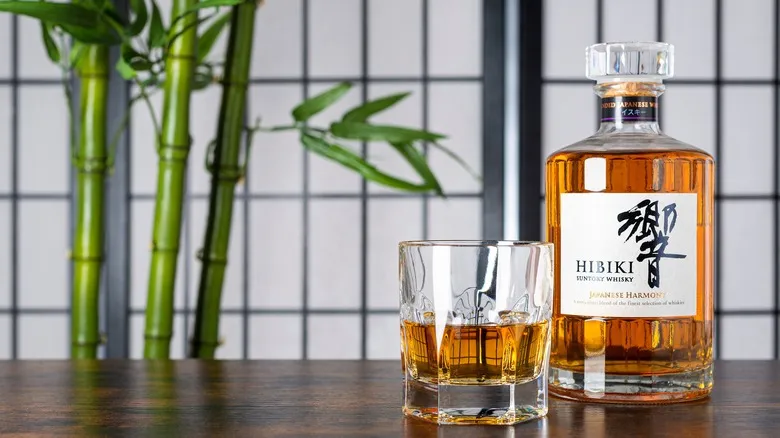
The Japanese whiskey industry owes much of its development to Masataka Taketsuru, who studied in Scotland from 1918 to 1920. During his time there, he apprenticed at various Scotch distilleries, acquiring valuable knowledge that he later brought back to Japan. Taketsuru worked alongside Shinjiro Torii at Kotobukiya Limited (now Suntory), contributing to the establishment of Japan's first whiskey distillery. In 1934, he founded his own distillery and created Nikka whiskey. Today, these two brands form the foundation of a vibrant and diverse whiskey culture. Both distilleries offer a wide range of whiskies, including single malts and blends. While Japanese whiskies often share similarities with Scotch, they are known for their refinement and increasingly experimental nature. Distilleries are now crafting various blends by utilizing different types of casks, fermentation methods, and stills.
Japanese whiskey has continued to evolve and gain international acclaim. "Japan produces excellent whiskies," says Torrance Coombs. "I haven't encountered one that I thought was subpar; they’re all good." He suggests that newcomers to whiskey might consider starting their journey with Japanese options. However, as the popularity of Japanese whiskey has surged, so too have its prices. Whiskey production has also expanded across Asia, with notable offerings from Taiwan and India, although these are still less common in the average American bar... for now!
Recommended

What Is Scotch Made From Actually?
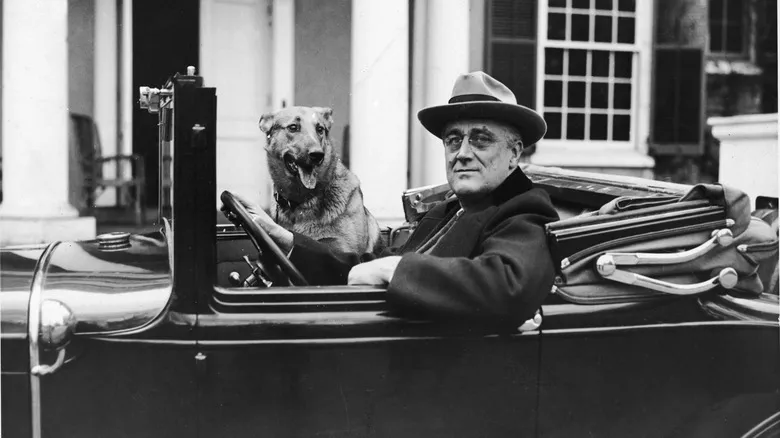
How FDR Championed The Dirty Martini
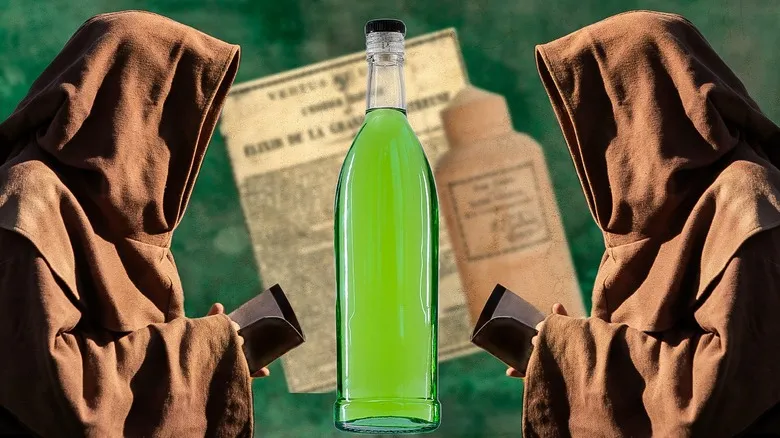
Only 2 Monks Know How To Make This Centuries-Old Liqueur

The Ingredients To Look For In A Great Canned Cocktail According To An Expert
Next up

